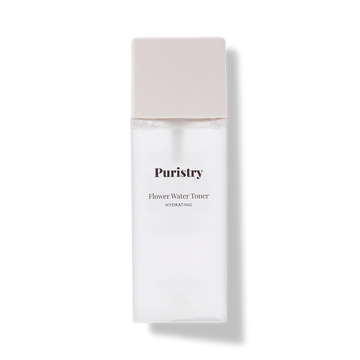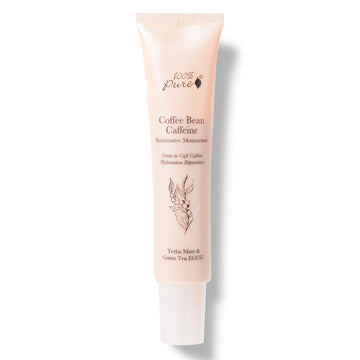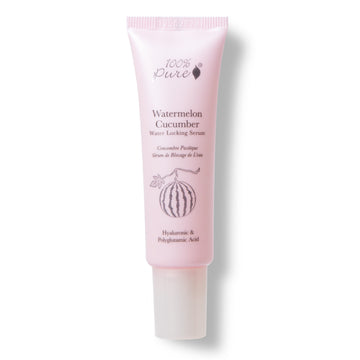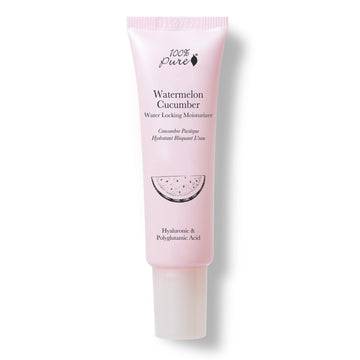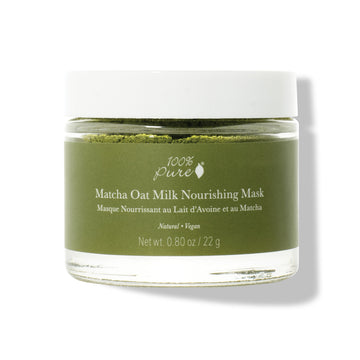Exploring the roles and benefits of ceramides for hydrated, balanced skin and the best natural products to get you there
Written by: 100% PURE ®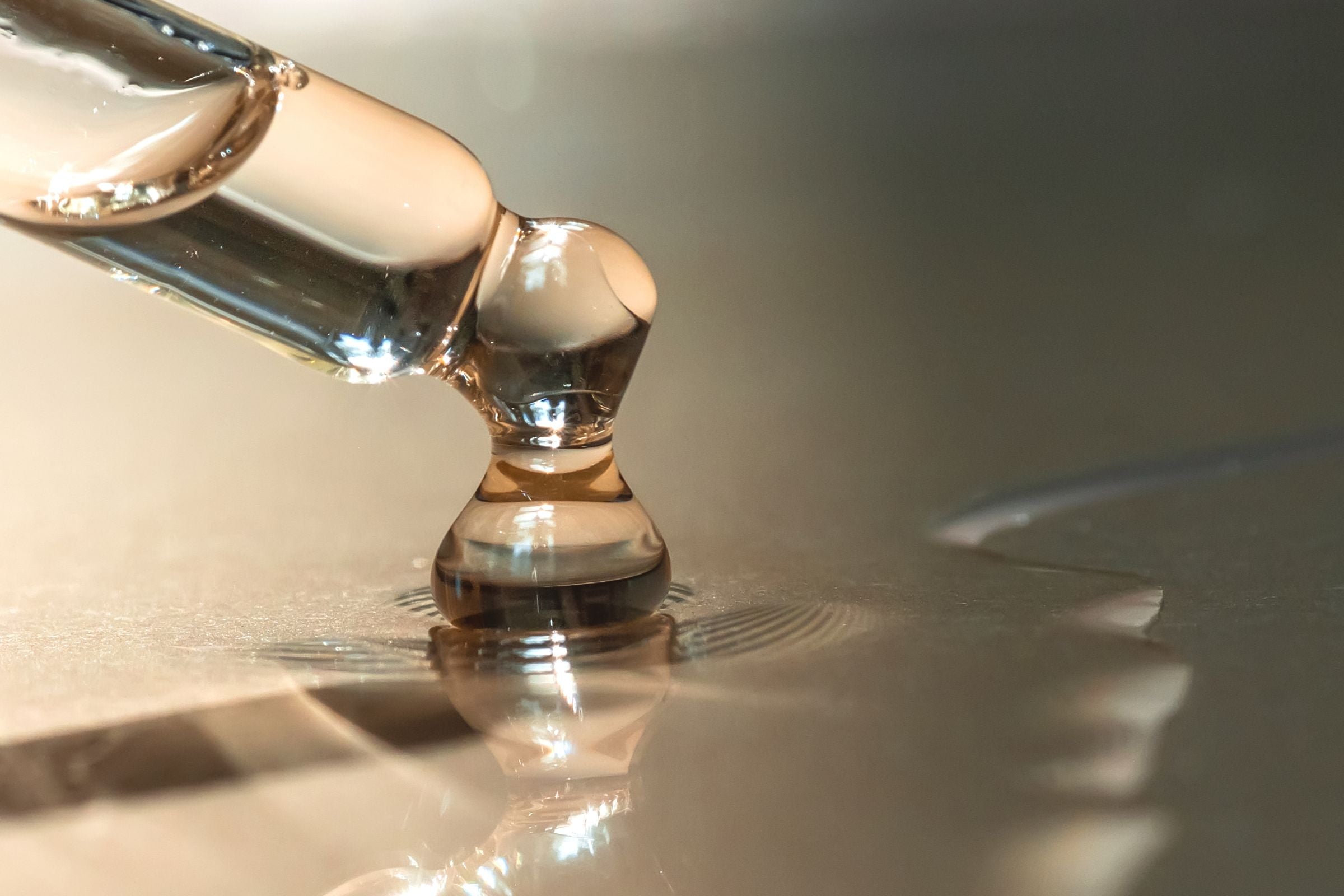
Achieving healthy, balanced skin is like balancing on a see-saw. One moment we’re rising for ways to absorb excess oil then shifting positions in the next instant to replenish oils and hydration levels for balanced skin.
Whereas it’s tricky to find the perfect balance on that platform, the same goes for the complexities of our skin with the protective barrier on one end, and then ceramides on the other trying to strengthen it. Thanks to ceramides, they help the skin to strike the center for optimal health and hydration of the skin.
With ceramides being a staple in many formulations for sensitive skin for years, it’s no wonder its notoriety only seems to be growing. That’s why we’re diving into the roles and benefits of ceramides in skin care, and how you can incorporate these highly-praised ingredients into your beauty routine.
You’ve probably come across ceramides in skin care formulations and had no idea what they are or what they do among the plethora of beauty ingredients out there. You’re not alone! This highly-praised but not fully understood skincare ingredient has been flying under the skin's radar – literally!
That’s right - ceramides make their moisturization magic under the skin’s protective barrier. However, to understand what these mysterious skin heroes are, we need to delve a little into the role of the skin barrier.
Though ‘barrier’ sounds like one does-it-all layer, it’s more complex, making up several different intricate layers. Two crucial layers include the lipid barrier, which consists mainly of fatty acids like the prized ceramides, and the epidermis, which is beneath the lipid barrier and functions as our outer skin.
The two barriers come hand in hand as ceramides keep hydration in the skin and pathogens out, while the epidermis forms a barrier that protects our bodies from UV damage. As we know, adequate hydration and moisturization are key elements to healthy, glowing skin!
You can napalm your skin with the top beauty ingredients, but if you want plump, firm skin, what you need is some old-fashioned fat, like those in ceramides! Just like fats in food can make it taste better, ceramides make your skin look better. How’s that food for thought?! But there’s more!
Ceramides are made up of a substance called sphingosine. Sphingosine is a chain of carbon atoms with an amino acid attached to it. They’re important in regulating the cellular process and survival, and binding to other fatty acids to form more ceramides and, thus, a stronger, firmer skin barrier. In addition, ceramides like to ‘stick’ together and act as the glue that holds everything together.
If we think of the skin as a brick wall, skin cells are the bricks, while fatty acids or ceramides are the cement that holds them all together, keeping moisture inside and bacteria and other harmful materials out. Any cracks or crevices between those bricks weaken the skin barrier and allow essential moisture to escape. So, it’s important to keep things nice and tightly bound – a primary function of ceramides!
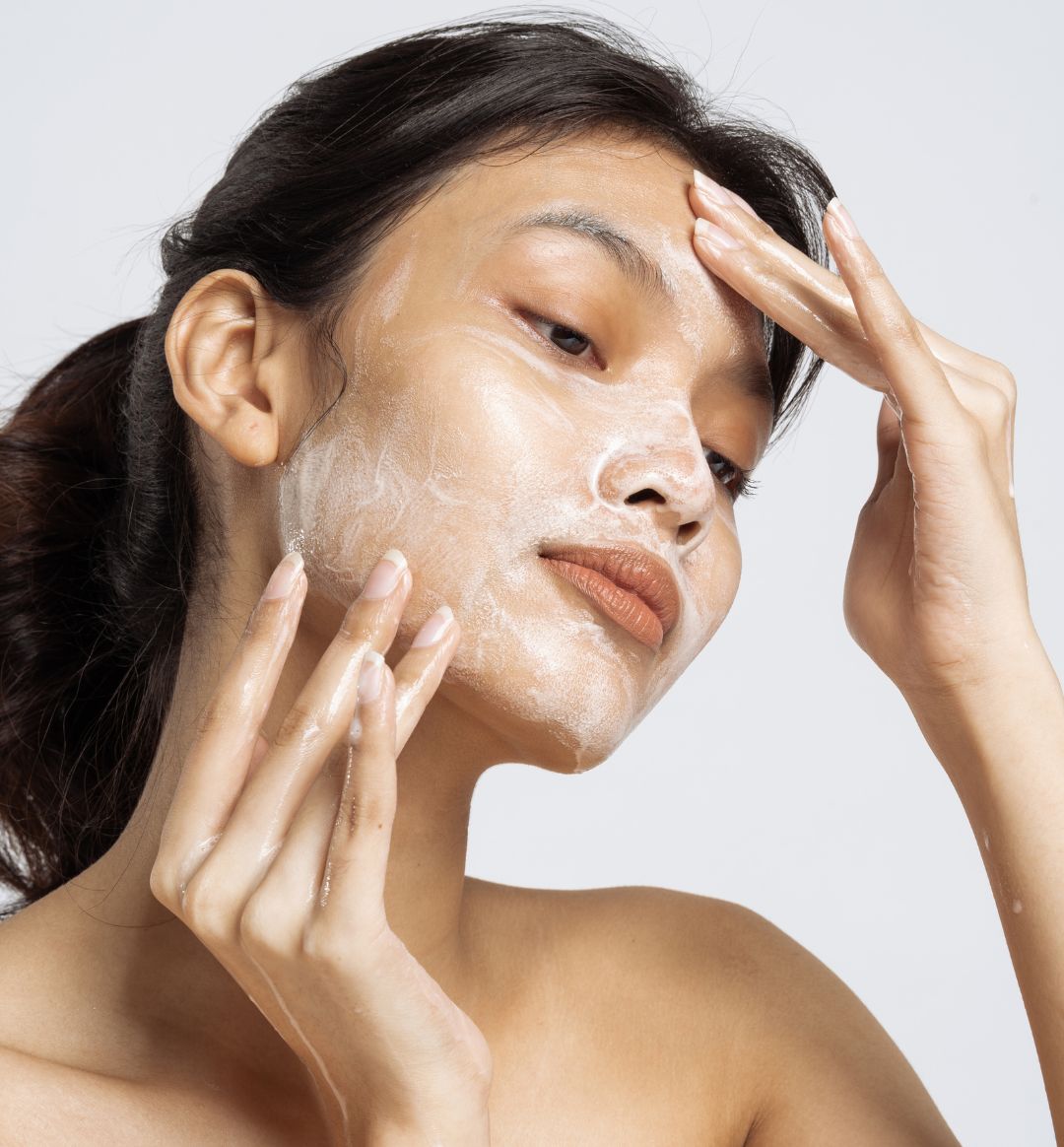
Remember the reference to fat being tasty and well, fat is flavor? Since our skin is more than half fat, we need all the “fat cement” we can get to lock in the good (water), keep the bad stuff out, and hold the whole skin suit together. But that’s just the tip of the old fatty acid chain when it comes to the beauty benefits of ceramides.
#1. Reduces transepidermal water loss
A healthy skin barrier has ceramides running the show to seal the moisture in and prevent transepidermal water loss (TEWL) from occurring. This happens when water passes from the dermis through the epidermis and evaporates from the skin's surface.
TEWL is a contributing factor to dry skin, and chronic dry skin can lead to aging concerns like fine lines and wrinkles.
#2. Protects the skin
Ceramides work to protect the skin against environmental stressors and pollution, which reduces free radical damage that chips away at the skin’s elastin and collagen - or the skin’s building blocks. This helps lessen loose or sagging skin and aging concerns like fine lines and wrinkles. It also prevents metabolic processes that can lead to hyperpigmentation and age spots.
#3. Strengthens the skin barrier
A loss of ceramides, whether due to aging or the overuse of harsh exfoliants and chemicals that strip the skin, compromises the protective barrier. This allows bacteria and pathogens to enter through tiny cracks and cause irritation. Replenishing those ceramides will keep the barrier healthy and functioning properly!
#4. Hydrates and smooths skin
Common traits of a compromised skin barrier are dryness, flakiness, and fine lines from dehydration and TEWL. Restoring lost lipids may increase hydration in the skin and improve the overall look and feel of your complexion.
#5. Helps with inflammatory skin conditions
When the skin’s barrier is not working properly, the skin can get very dehydrated. This makes the skin dry, inflamed, and at risk for inflammatory skin conditions like eczema, rosacea, acne, and psoriasis. In addition to those skin woes, your complexion might be duller than usual.
Newsletter Subscribe
for more blog updates and exclusive discounts
Since ceramides play such a huge role in the freshness and plumpness of our skin, it makes sense these tiny but mighty skin heroes can sing their praises without anything else, making them a staple to add to your beauty arsenal. So, where are these mysterious micro beauties lurking? Well, your skin naturally makes them. However, the body is a magical thing … until it’s not.
Leave it to the good old aging process to steal some of the shine of ceramides. Though we are grateful for the experience to have a natural aging process, on the again end, these ceramides slow down and the “fat cement” or glue between them doesn’t hold bonds as well. Skin conditions like chronic dryness, eczema, or psoriasis can also affect ceramides and barrier function.
In a cruel yet natural twist of fate, we all run out of ceramides as we get older. So, how do you get more of these hydration heroes into your skincare routine? If you want to nourish your skin from the inside out, start with your diet. A truly natural skin care regimen should start with the foods that you put into your body, and healthy fats are one of the most important biological building blocks out there.
According to nutritionists, essential fatty acids like omega-3 are essential to the health of your cell membranes, literally guarding your skin cells at the most fundamental level. Foods that contain a healthy ratio of omega-3 to omega-6 fatty acids include olive oil, avocado, and coconut oil. When the membranes of your cells are well-maintained, important nutrients can penetrate the cell, while damaging waste products are barred from entering.
This translates to healthier skin at the cellular level. The cell membrane also helps skin cells (and other cells!) to retain water; by keeping those membranes bolstered with the right amount of healthy fats, you’ll ensure that your cells retain hydration for longer, leading to plumper, softer, more supple skin.
And, remember, healthy fats aren’t just for eating! Many natural moisturizers, balms, creams, and foundations contain ingredients that are rich in healthy fats. Plant-based butters such as shea butter, cocoa butter, and avocado butter are rich in healthy fats, as are many plant-based oils like avocado oil, walnut oil, and almond oil.
When these are used as ingredients in natural skin care products, these healthy fats can help to bolster your skin’s protective lipid barrier, both locking in hydration and working to protect your skin against environmental damage.
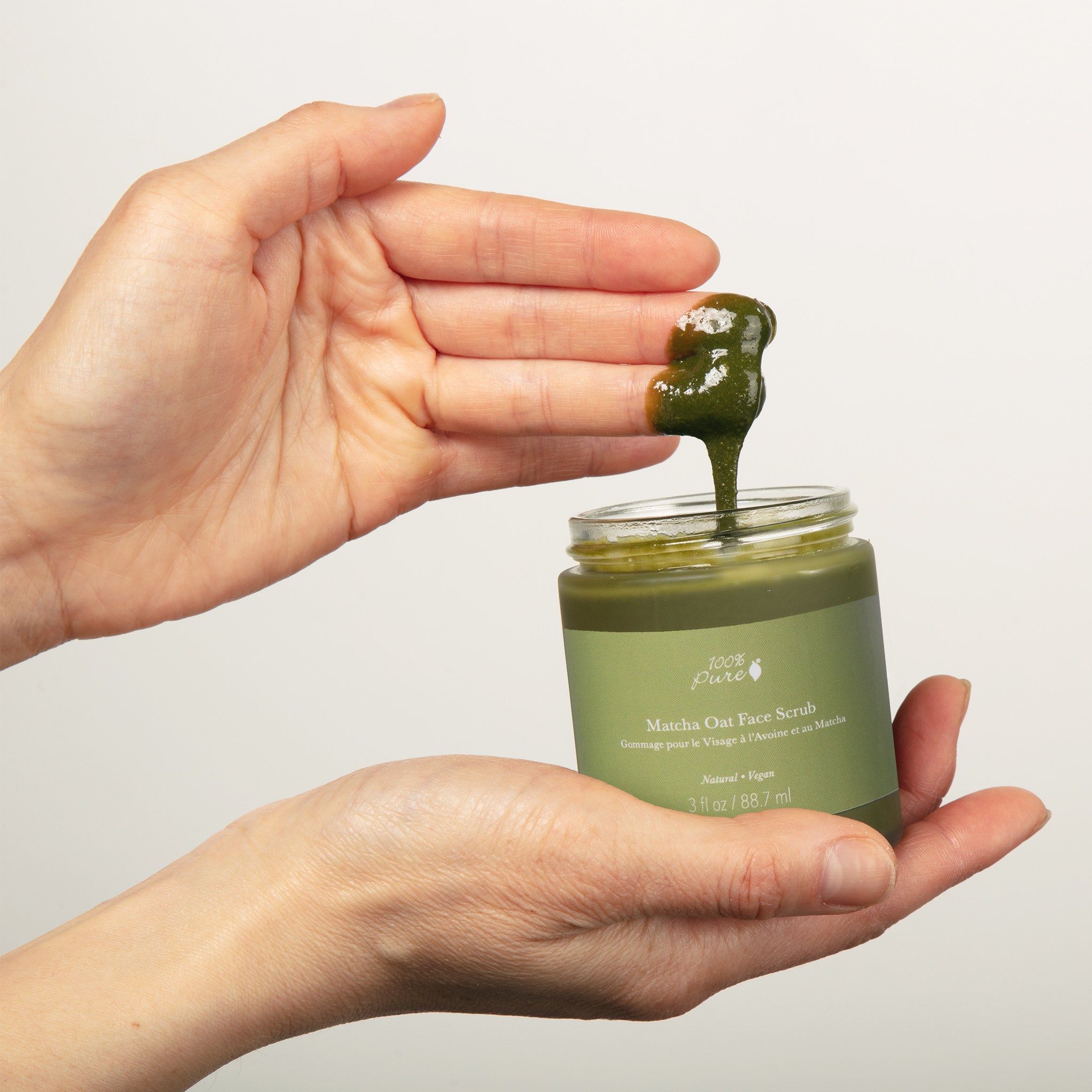
Despite our best intentions for our skin, none of us are perfect. Many of us are guilty of over-exfoliating our skin or have been guilty of using harsh, chemically-based products on our faces, causing inflammation, irritation, and damage. Seeking out natural skin care products that contain healthy fats or ceramides can be a great way to build your skin’s lipid barrier back up, and restore it to optimum health.
Depending on your skin type, you can stock up on ceramides in serums, moisturizers, essences, masks, and treatments. For dry and sensitive skin types, using a moisturizer with ceramides may work best when applied immediately following a shower to lock in extra moisture. If you want ceramides to work optimally, pair them with other natural fats.
The great news is that we have natural and effective products that feature the soothing and moisturizing properties of oryza/rice ceramides, which prevent water loss and strengthen the natural skin barrier. We have those natural and effective ingredients in our formulas and a few star products under our sleeves. But we don’t gate-keep the secrets to natural beauty and our enthusiasts!
Moisturization is essentially adding essential hydration to the skin, helping to repair and reinforce the lipid barrier. Those with dry skin types will benefit from using moisturizing products, since having a dry skin type means that the lipid barrier is compromised. When there is less oil production in the skin, the result will be less protection from TEWL and a higher risk for dehydrated skin.
No matter your skin type, we have your back – and complexion! For drier skin, we have some natural goodies to bring your complexion back to healthy harmony. Check out the top natural products featuring oryza/rice ceramides to strengthen the skin barrier and protect those precious ceramides:
Go beyond your average toner with a super-boosted formula featuring rose water and other floral hydrosols to quench thirsty skin cells and reduce redness. This soothing toner contains hyaluronic acid to replenish dry skin, and organic witch hazel to purify your pores. Its aromatic rose fragrance will deliver you into a divine and eternally romantic skincare heaven!
Watermelon Cucumber Water Locking Serum
In any good-for-the-skin routine, a serum would be key in locking the essential nutrients in from the toner and forming a protective barrier with a serum. This intensely hydrating hydrogel serum locks in watermelon hydrosol to revitalize dehydrated skin cells with skin-plumping polyglumatic acid from fermented natto beans and moisture-retaining hyaluronic acid.
The bonus: The rice ceramides in our serum help soothe redness-prone or compromised skin with its anti-inflammatory properties while also improving its overall appearance with moisturizing benefits and a reduction in fine lines and wrinkles.
Watermelon Cucumber Water Locking Moisturizer
Featuring the same skin hero rice ceramides, our hydrating moisturizer locks in watermelon hydrosol and polyglutamic acid to naturally restore skin elasticity, promote cell regeneration, and reduce signs of aging. This fabulous formula also contains Irish moss, which is a type of red algae, that moisturizes, smooths skin, and helps reduce TEWL.
Matcha Oat Milk Nourishing Mask
Your skin will find its perfect match-a with our nourishing and complexion-changing mask. Made from tender, shade-grown tea leaves, this water-activated powder mask is designed to revive your complexion with help from hyaluronic acid and vitamin C. Boasting an array of antioxidants and polyphenols, it’s specifically designed to support radiant-looking skin.
Whether you’re trying to balance back-and-forth on that skin see-saw for healthy, hydrated skin, the science behind prized ceramides makes them the center of any skincare routine. These powerhouse lipids have anti-inflammatory properties that can soothe sensitive skin and increase elasticity and firmness in aging skin.
Ceramides can also replenish the moisture stripped by harsh breakout treatments without clogging pores for a healthy skin barrier. We can’t think of a reason for ceramides not to be in your beauty arsenal!
- Tags: February-2023, Skin Care, skincare
We carefully hand-select products based on strict purity standards, and only recommend products we feel meet this criteria. 100% PURE™ may earn a small commission for products purchased through affiliate links.
The information in this article is for educational use, and not intended to substitute professional medical advice, diagnosis, or treatment and should not be used as such.


